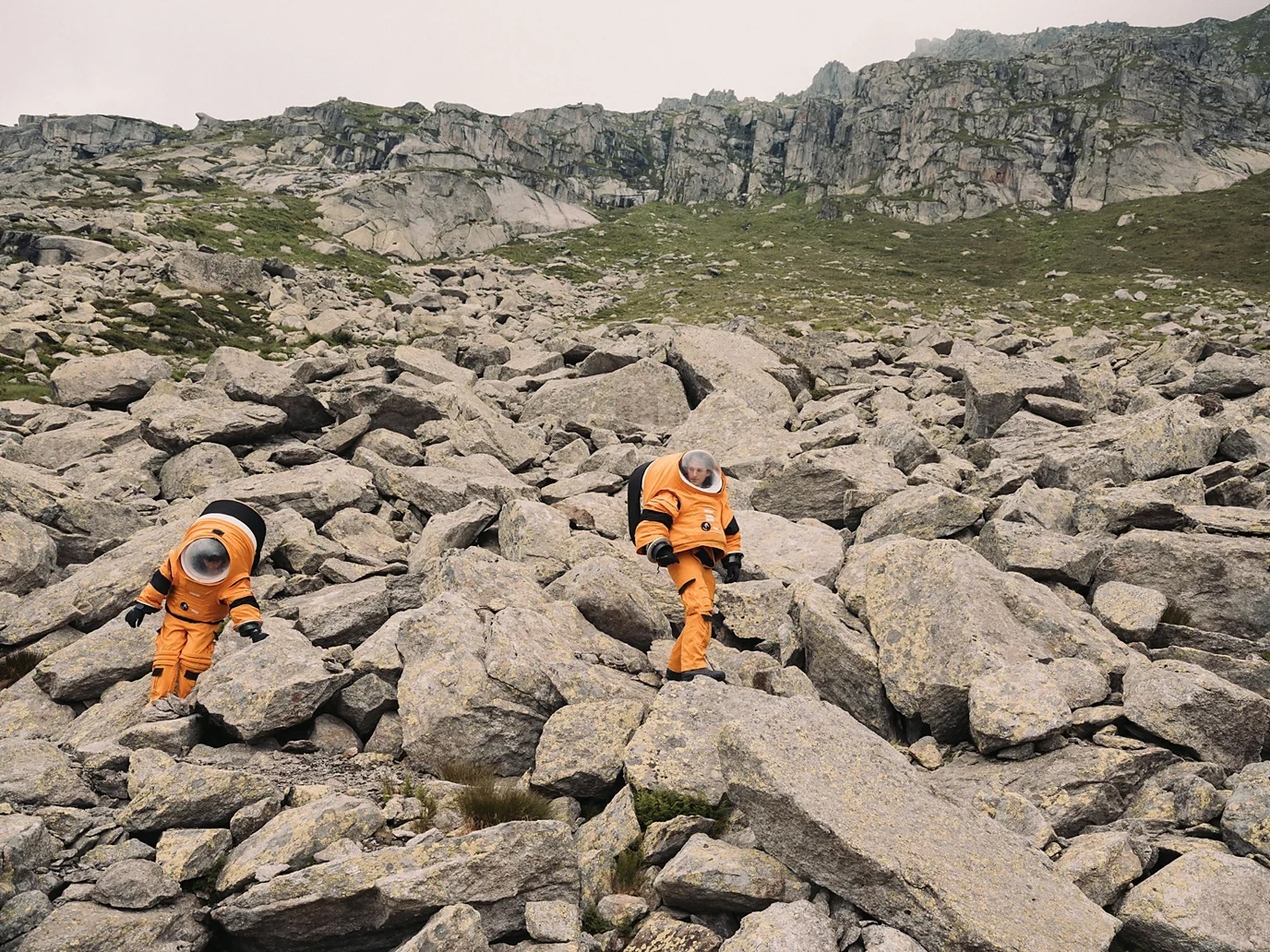25.10.2025

The former army base lies 2,000m (6,561ft) above sea level, with rocky slopes standing in for the lunar landscape (Credit: Jordi Ruiz)
Deep inside a Swiss mountain, a group of students spent some of the summer simulating what life might be like inside a lunar base. The BBC joined them before the "mission".
What was your childhood dream? For some, it was the idea of becoming an astronaut. There are few dream jobs more challenging to achieve.
"I remember when I was first trying to figure out that I wanted to be an astronaut, thinking, 'How do I do it?'," says Katie Mulry, a 24-year-old American aerospace engineering master's student at the Institut Supérieur de l'Aéronautique et de l'Espace (Isae-Supaero) in Toulouse, France. "I was looking up what university I could go to, what I could study. And really, there's no clear path."
Mulry is also a project leader at Asclepios, the world's first and biggest international student-led space initiative which carries out yearly simulated space missions every year. She was part of the second Asclepios mission in 2021-22 as an "analogue astronaut", carrying out a simulated mission deep inside a Swiss mountain. Since 2024, she helped organise Asclepios V, its fifth mission. It culminated in a "crew" of nine international students spending more than two weeks isolated deep inside the once top-secret Gotthard military fortress in Ticino, Switzerland from the end of July until August this year.
Mimicking a Moon base
In Greek mythology, Apollo is the god of the Sun, archery, knowledge, prophecy, poetry and music. Legend has it that he would fly across the skies in his horse-drawn golden chariot. This elegant vision inspired Abe Silverstein, director of space flight development at Nasa during the 1960s, to give the name Apollo to the manned space flight programme with the goal of reaching the Moon. "Asclepios is the son of Apollo," Mulry says. "It's kind of like following in the footsteps of the Apollo programme and going back to the Moon."
When I first arrived at the mountain base of Sasso San Gottardo to meet the crew and see where they would be re-creating their rocket launch and lunar base, I couldn't actually find it.
Between the thick fog hanging over us, and the fact that it is hidden underneath the Alps, it was clear why the Swiss government – despite its neutrality policy – built a fortress here during World War Two. Carved into the mountain is a network of 3.5km (2.17 miles) of tunnels that remain at a constant 6C (42.8F) year-round, at an altitude of 2,000m (6,561ft). The fortress still has two cannons, which when in service were capable of hitting targets over 26km (16 miles) away.
The walk along the tunnel from the entrance embedded in the rocky Gotthard Mountain to where I meet Mulry feels endless, like a disorienting dream.
This dark, cold and narrow setting was intentionally chosen to represent a base located inside one of the Moon's "caves" (actually lunar lava tunnels). These have been designed to mimic what human habitation might be like beyond Earth, and to explore how people would behave or react to the extreme conditions of the Moon or Mars, which present complex technological, physical and psychological challenges.
"It's about understanding those challenges and being able to study them here on Earth so that when people go to space, space agencies are more prepared to support astronauts," Mulry explains. "I really love exploring human spaceflights," she tells me. "My goal is to help make life better for people in space, maybe to become someone in space one day."
Asclepios is made up of about 60 people from different countries. It was set up to give students from around the world an idea of what applying to become an astronaut and going to space could be like, emulating the European Space Agency (Esa) and Nasa's selection and training processes.
Throughout the year, participants come together for in-person extreme environment training (including overnight hikes in the Alps during winter or plunging into cold water under a frozen lake), join a zero-gravity parabolic flight, and learn first response, survival and rescue skills. They also receive lectures about space psychology and hear from experienced astronauts.
"Hopefully it inspires people and creates opportunities for students to enter the space industry in whatever kind of role they're interested in, and to go forward and be the new space professionals of tomorrow," Mulry tells me.
This is why Mateus Magalhaes, a 27-year-old student in his first year of an aerospace engineering PhD at Isae-Supaero, applied to be part of Asclepios V. Originally from Brazil, he told me that from a young age, he had been fascinated by aircraft. "Then at about 12 or 13, I discovered that it was possible to work with rockets and that being an astronaut was also a real career."
For this Asclepios mission, Magalhaes is assigned the role of commander, the person in charge of overseeing the "lunar base" and the crew. Although all the analogue astronauts have specific and shared roles, he is ultimately responsible for final decision making.
"There are other Moon or Mars simulations, but most of them are paid, and they're quite expensive. So for students, it is not always viable," Magalhaes says. One of the unique aspects of Asclepios is that it provides the experience for free for those who are selected to participate. As a non-profit association they rely entirely on donations, crowdfunding and sponsorships to operate, which keeps Mulry and her colleagues busy year-round.
Everyone is buzzing in the Mission Control Center (MCC), where some 25 to 30 students run operations for the simulated mission back from planet Earth. The excitement is pulsing in the air in the moments before the launch countdown begins. Over the loudspeakers, "Five, four, three, two, one… ignition!" marks the official start of the mission.
After lift-off, the analogue astronauts "travel" for one day to get to the Moon. Their "rocket" is a small room with only some camp beds and no bathroom, so they need to wear nappies.
Once landed, they enter the "Moon base", their home for the next 16 days. In small living quarters with one bathroom, the crew of nine will eat real dehydrated "astronaut food" and carry out the range of science experiments they have been preparing for.
Although the base is where they will spend most of their time, the astronauts will, at some point, go on extravehicular activities (EVAs) to simulate a Moon walk, in full gear and spacesuits. This is where Sasso San Gottardo's tunnels come into action, representing lava tunnels similar to the Moon's.
This year, the astronauts avoid sunlight entirely throughout the mission. Even the simulated "Moon walks", when they go outside of the fortress to explore the mountains, will be done during the night, preparing them for similar conditions at the lunar south pole.
Crucially, one of the science experiments the crew will be carrying out will be to study the effect of constant darkness, monitoring how the lack of natural light impacts their sleep quality, mood, circadian rhythm and general health. Every year, Asclepios partners with academics and researchers in the industry to carry out science experiments during the analogue missions. This particular project, Kronoespazio or Circadian Rhythms and Sleep in Simulated Space, is led by principal investigator Maria Comas Soberats, a chronobiology and sleep researcher at the University Hospital in Vitoria-Gasteiz in Spain, along with other academics in Spain, Australia and Switzerland.
"It's inspiring to see how a student-led initiative like Asclepios can engage researchers from different countries to collaborate," Comas says.
For this, the analogue astronauts have been wearing wrist devices to track their sleep and body temperature before starting and will continue to do so during their mission. The experiment requires regularly collecting samples from the crew to measure their melatonin and circadian gene expression.
The findings will be published in scientific journals and presented at conferences, and the hope is that these results will help inform future strategies to support astronaut health and may also benefit people on Earth who experience circadian disruption, such as those working in demanding environments like hospitals, night shift workers or long-haul travel. (Note: the first report from the mission was published in early October.)
Matthew Acevski, a 23-year-old British PhD researcher at Imperial College London is role-playing as a science officer during the mission. Amidst the preparations, he sits down with me to tell me more about his involvement in the programme so far.
"My background is very theoretical. I've done a physics degree, and now I'm doing a PhD in space plasma physics," he says. "Asclepios gives me the opportunity to do a real hands-on task, which is a fantastic opportunity if someone wants to get into spaceflight research or to experience a human spaceflight mission."
His studies so far have included researching how particles coming from the Sun interact with planets on the outer edges of our Solar System.
"This has been a formative experience for me, one of the best experiences of my life," Acevski tells me. "It's given me more clarity as to what I would like to do. After completing Asclepios, I'm genuinely leaning more towards the human spaceflight research side of things, learning more about how we can improve human spaceflights in the future, or perhaps even participating in a real-life Mission Control Centre."
Both he and Lauren Victoria Paulson, a 22-year-old British-American PhD student in Aerospace Engineering at the Georgia Institute of Technology, will celebrate their birthdays during the mission, isolated from the outside world.
Paulson is the base engineer of the crew, solving any mechanical, hardware or technical issues that arise. Apart from flying planes and scuba diving, she is interested in extreme environments, in particular improving how humans can live in those conditions.
And there is nothing more extreme than space.
"One of the fascinating things about space is that you can't waste things, not a single drop of water. You have to be super-efficient," she says. "If you can design for space, then you can scale down those technologies and design for people living in extreme cold environments, deserts, areas with very little water, and allow for humanity to live in all these harsh environments of the world. How do we build habitats as climates are getting more extreme each year?"
She believes space missions can have tangible effects back here on Earth, helping us learn how to recycle different materials, reduce water use in agriculture or maximise plant production.
"Tonnes of technologies started in outer space and have made their way into the needs of Earth. Our computers would not be where they are right now without outer space, all of our cell phones are using satellites in outer space."
When I asked her how she deals with the difficulties of preparing for analogue (or real) space missions, she tells me she is comfortable with being uncomfortable.
"Every time you push your comfort zone, you become a little more like an astronaut, and I think a better, more resilient person."
The students are too excited and busy with last-minute preparations before their take-off to notice I was leaving their "lunar base". As I emerge from the tunnel and adjust my eyes to the daylight, I wonder if one day they will venture out of their base to explore a world other than our own.
Quelle: BBC
